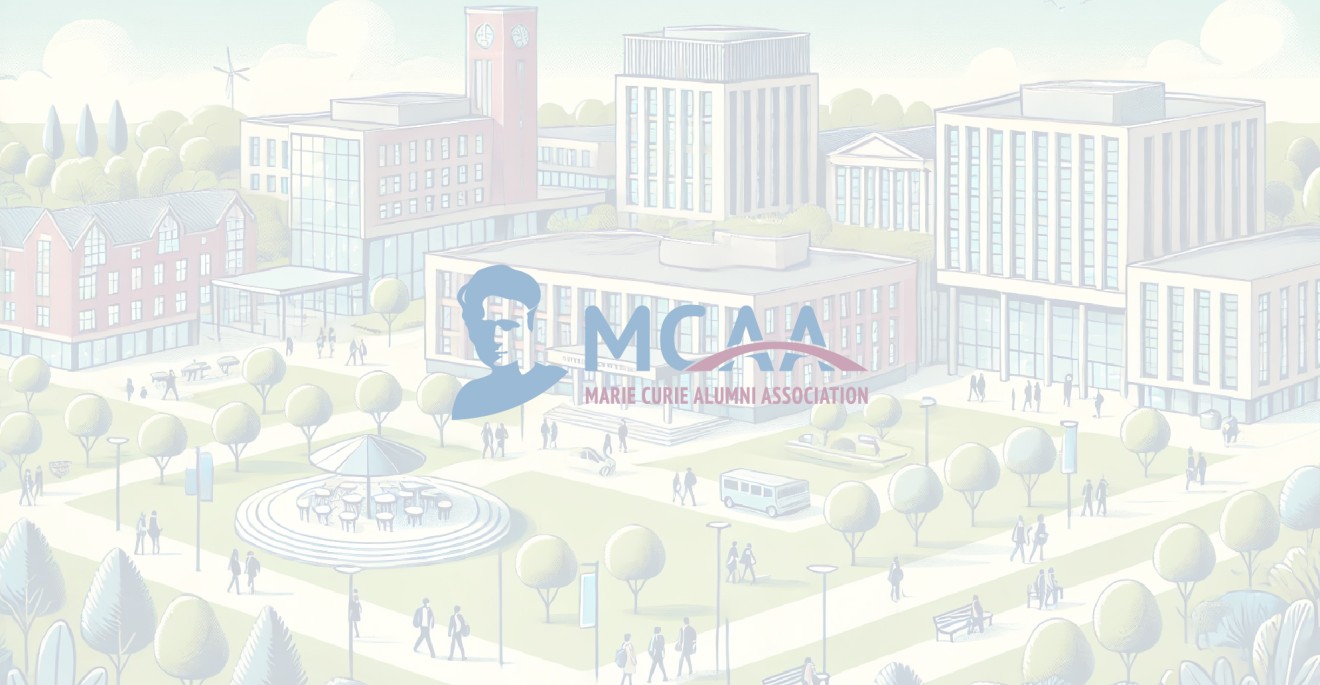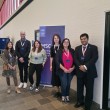Lindau 66, Edited summary of the highlights of the Physics meeting.

Lindau 66, Edited summary of the highlights of the Physics meeting.
The 66th Lindau Nobel Laureate Meeting was inaugurated on June 26th in Lindau on the banks of Lake Constance, Germany. Countess Bettina Bernadotte af Wisborg, President of the Council, welcomed the guests who hail from 80 countries. 29 Nobel Laureates and more than 400 selected young scientists are taking part in the meeting, including 15 Marie Sklodowska-Curie Action fellows and an even larger number of fellows supported directly and indirectly via the ERC and other Horizon 2020 projects and programmes.
2016 was dedicated to Physics. One of the key programme points was the question of whether quantum technology is the technology of the future in the 21st century. Particle physics is also a focal topic – prominent speakers on the subject included the Laureates Takaaki Kajita and Arthur B. McDonald, who were awarded the Nobel Prize in Physics 2015 for the discovery of neutrino oscillations, which proves that neutrinos have mass.
Vint Cerf, father of what we know as the Internet and Turing Medal holder; also attended to give the Heidelberg Lecture. He explored the motivations for and design of the Internet and the consequences of these designs. The Internet has become a major element of communications infrastructure since its original design in 1973 and its continued spread throughout the societies of our planet. There are many challenges posed by the continued application of the Internet to so many new uses. Safety, Security and Privacy are among these challenges especially as the so-called "Internet of Things" continues to evolve. The increased digitisation of our information poses a different challenge: the preservation of digital content for hundreds to thousands of years. Might we be facing a Digital Dark Age?
Austrian Federal President Heinz Fischer addressed the Plenary meeting participants – as this year’s host country, Austria is presenting itself as a preferred research location. Singapore’s President Tony Tan Keng Yam was also among the guests. Minister Johanna Wanka – the German Minister of Education and Research – was also present as one of the meetings’s prime supporters.
In his final speech, Wolfgang Schürer, the immediate past Chairman of the Lindau meetings for over a decade, stressed the importance of intergenerational dialogue. The present generations would have to accept the future and ensure that in decisions of today the consequences for future generations are taken into account. Addressing the young scientists, Schürer said: “During the discussions, if you spot a vacant chair, don’t think it is empty. Imagine the chair is occupied by a member of a generation yet-to-come and think what he or she would to inherit from you.”
The scientific programme of the 66th Lindau Nobel Laureate Meeting kicked off with a lecture by Japanese physicist Hiroshi Amano. In 1989, Hiroshi Amano succeeded, for the first time, in producing efficient blue light-emitting diodes – the basis for the production of white LED light. For his work he was awarded the 2014 Nobel Prize in Physics. 29 Nobel Laureates and some 400 young scientists from 80 countries are attending the meeting at Lake Constance, which will run until Friday. The main topics of the lectures and panel discussions are quantum technology, particle physics and cosmology.
Hiroshi Amano shared the 2014 Nobel Prize in Physics with Isamu Akasaki and Shuji Nakamura for “for the invention of efficient blue light-emitting diodes, which has enabled bright and energy-saving white light sources”. Despite years of research, it had not previously been possible to produce white light with LEDs; only to manufacture red and green diodes.
In his presentation, Amano vividly described the difficult path to the successful development of the necessary material systems and encouraged the young scientists present to pursue their own research goals with inquisitiveness, perseverance and creativity. He himself ran more than a thousand experiments before his efforts were successful. Although LEDs had long been employed mainly as minuscule lamps for signal displays, their use in flat screens and smart phone displays and as energy-saving lighting has now become an indispensable part of modern technology. Even as a student, Hiroshi Amano, now 55, had envisioned developing a light source of the future.
No Physics meeting is complete without reporting on the groundbreaking work done at CERN, where at any one time there are twice as many Marie Curie Fellows than attended Lindau. In particular, Nobel laureates Steven Chu, David J. Gross, Takaaki Kajita and Carlos Rubbia together with three young scientists working at the European nuclear research centre CERN in Geneva spoke about recent experiments designed to detect hitherto unknown particles. In view of numerous unexplained phenomena, it was generally agreed that a refinement of the standard model of elementary particle physics is needed. The standard model is the most successful theory to date that seeks to classify all the known elementary particles and their interactions. The standard model incorporates the current state of knowledge about matter particles and force particles. However, it fails to explain numerous phenomena; for example, the theory does not include gravitation. Moreover, knowledge is lacking about the composition of dark matter and dark energy, which make up a large part of the universe. Supersymmetric particles, which may provide an explanation, do not figure in the standard model. Also, the standard model is at odds with the finding that neutrinos have mass, as explained during the panel discussion Takaaki Kajita, who was awarded the 2015 Nobel Prize for this observation.
ATLAS and CMS, the two large detectors of the Large Hadron Collider (LHC) particle accelerator at CERN, presented data in December last year that might suggest the existence of another massive particle. “We’re analysing these data very carefully at the moment, but we do not yet have any official findings to announce,” reported Fabiola Gianotti, CERN’s Director General. There was some speculation as to whether news of the discovery of the suspected new elementary particle might be expected at the beginning of August, when the 38th International Conference on High Energy Physics (ICHEP) is held in Chicago. Four years ago, the discovery of the Higgs boson was presented at this same conference series, timed with a key Panel Session at Lindau on July 4th 2012, an unforgettable day for those researchers present.
Mid week the tables are turned. Thirty young scientists had a unique opportunity to present their research work to participants. It was also the first time that a poster session was held at the meeting. One hundred eighty of the 400 young participants from 80 countries proposed posters. The topics covered precision measurements, quantum physics, astronomy, biophysics, high-energy physics and materials science.
“The presentations are very lively and really good. I am especially impressed by the expertise of two young scientists – their posters are about topics I am very familiar with,” said French quantum physicist Serge Haroche. For research of the interactions between light and matter, Haroche was awarded the 2012 Nobel Prize in Physics together with the American David Wineland. The attendees at the session were treated to eye-catching posters with illustrations and graphs. In addition, the poster presenters had 90 minutes to explain and discuss their work and to field questions. The aim of introducing this event format was to highlight the achievements of the young scientists. “We found it difficult to select just 30 ... because all the submitted posters were of high scientific quality. The excellence of the young researchers was evident,” said Council member Rainer Blatt.
As the momentum builds towards the end of the week, the overarching issues are debated. In 2016 the key question raised was “Is quantum technology the future of the 21st century?”, explored in a panel discussion with the Nobel Laureates Serge Haroche, Gerardus ’t Hooft, William Phillips and David Wineland.
Blatt has no doubt: quantum technologies are driving forward a technological revolution, the future impact of which is still unclear. Nothing stands in the way of these technologies becoming the engine of innovations in science, economics and society in the 21st century. Early laboratory prototypes have shown just how vast the potential of quantum technologies is. Specific applications are expected in the fields of metrology, computing and simulations. However, substantial funding is required to advance from the development stage.
The first quantum revolution laid the physical foundations for trailblazing developments such as computer chips, lasers, magnetic resonance imaging and modern communications technology. In the Quantum Manifest published recently, researchers now talk about the advent of a second quantum revolution. But what exactly does this mean?
This second quantum revolution, takes advantage of the phenomenon of entanglement. It’s a natural phenomenon that basic researchers recognized as early as the 1930s. Until now, all the technologies derive their utility from the wave property upon which quantum physics is based. In the quantum world, its associated phenomena are often discussed in the context of wave-particle duality. Entanglement, which has been known for 85 years, has only been experimentally investigated in the past four decades based on findings by John Bell in the 1960s. Today, entanglement forms the basis for many new potential applications such as quantum communications, quantum metrology and quantum computing. The second quantum revolution is generally understood to be the realization of these new possibilities.
Marketable applications and products are already available in the field of quantum communications, meaning that such devices can already be purchased and commercially used. The use of entanglement for matter – not just for photons – will transform metrology by providing more sensitive and faster-responding sensors. Initially, it will produce small and later large quantum processors for a broad range of applications, for example complex simulations like weather forecasts or tidal surges. Quantum processors will initially be used to solve a few (yet important) special problems, but in the more distant future also for universal calculations. There’s actually no discernible obstacle to realizing quantum technologies. Increasingly complex systems are being devised.
These technologies will lead to expanded and improved computing applications, which will continuously advance improvements in the sciences. But it’s difficult to predict how far-reaching the impact on society and economics will be. Will the second quantum revolution only benefit highly developed countries or regions in the world that invest heavily in cutting-edge research? Ultimately, everyone will benefit. But like all developments, only those countries and regions will really derive a benefit – including profit in the commercial sense – that play a role in the development and refinement of these technologies early on. We will need cutting-edge research for some decades to come, and this entails a degree of financial, institutional and above all personnel commitment in order to tap the potential of quantum technologies.
The Lindau Meeting drew to a close today with a panel discussion on the future of scientific education. In view of the rapidly increasing demand for innovations in science and research, the final panel discussion addressed the issue of academic training of young scientists. Enrolment in the natural sciences is booming in some emerging markets, an exemplary example of which is Ghana where enrolment in sciences versus the humanities increased nearly 10% between 2010-2014. In stark contrast, participation in the sciences continues to decline in Western countries; for example in the largest Western education system, the United States, only 16% of high school students are proficient in math and just half of those actually pursue a career related to science. This is happening as reliance on scientific innovation is pervasive in every facet of society and urgent breakthroughs are required (e.g., even the antibiotics of last resort have failed recently with no new solutions in sight).How can we stimulate interest in more young people to study the STEM subjects science, technology, engineering and mathematics? Will new teaching methodologies contribute to a more contemporary and effective transfer of knowledge? How can we raise education standards in developing countries? These were among the questions discussed by the Nobel Laureates Brian P. Schmidt, Dan Shechtman and Carl E. Wieman, and Tamás Álmos Vámi, a young scientist from Hungary.
Full reports of each of the sessions are available in the extensive Mediatheque of Lindau at http://www.mediatheque.lindau-nobel.org/
Mike Rogers


